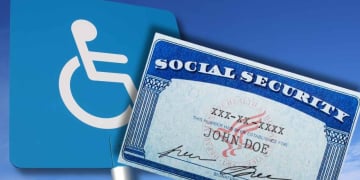Some people are still wondering if a new stimulus check will arrive in June, with a doubt fueled by social media rumors. But, to be clear from the start, there are no confirmed plans for a new federal payment of this type. Let’s clarify how things really stand.
The issue with the previous checks is now history. The windows for requesting those payments closed long ago. I’m referring to the first check from 2020, the second one that went out before January 2021, and the third one during 2021. Those trains have already departed.
The deadline for the final stimulus check has passed: What options remain?
The last important deadline was April 15, 2025. That was the deadline to claim that third check, the $1,400 related to the 2021 Recovery Rebate Credit. Not even a tax extension could save you; your 2021 return had to be filed before that date. If you didn’t, that money now belongs to the U.S. Treasury. There’s no going back and no appeals possible.
You’ve probably seen the rumors on social media or some websites. They’re talking about a fourth stimulus check of $2,000. Sounds good, right? But here’s the reality: neither Congress nor the IRS has confirmed or endorsed that idea. You have to be very careful with this news.
It could simply be misinformation, or worse, a scam attempt. Don’t get your hopes up about this just yet.
And what happened to Donald Trump’s DOGE dividends?
There was also another topic floating around for months. There was a lot of talk about supposed “DOGE stimulus checks” or “DOGE Dividends.” The idea stemmed from supposed savings accumulated by the Department of Government Efficiency. It was said they could return up to $5,000 per taxpayer. Trump himself mentioned this in February.
Where did this whole mess come from? Apparently, James Fishback, head of an investment firm called Azoria, floated the concept in February. He called it the “DOGE dividend.” Basically, he proposed a tax refund funded with part of the savings this department would supposedly generate.
Musk, for his part, responded with something like, “I’ll check with the president.” But be cautious, this was just a proposal.
The Department of Government Efficiency has a website where they display what they call their “Wall of Receipts.” There they claim to have saved about $175 billion, which they estimate would be about $1,087 per taxpayer. The problem is that they’ve only clearly detailed about $70 billion. This makes many people doubt the total figure. Where is the rest? It’s not very clear.
But here’s the kicker: a few days ago, Elon Musk announced he was leaving DOGE. He said he was going to focus on his other businesses. This basically throws the whole “DOGE Dividends” idea out the window.
Fishback’s proposal, which relied on Musk and that department, came to nothing, without a leader, and now Musk and Trump seem to be somewhat at odds, with the two business magnates exchanging criticism.
Real options now that stimulus checks aren’t coming back
Understood: the deadlines for the old checks have passed, and no new federal stimulus is coming. So what can Americans who need a financial break do? Well, all is not lost. There are alternatives worth exploring, especially at the state or local level. They can be a key support to get out of an economic slump.
One concrete option is Guaranteed Income Programs (GIPs). These are different from one-time stimulus checks. GIPs offer regular, monthly payments over a defined period. This period can be 6 months, 1 year, or even 2 years, depending on the specific program.
A concrete example is the Magnolia Mother’s Trust in Jackson, Mississippi. This program gives $1,000 each month for an entire year. It’s specifically aimed at low-income Black mothers. In addition to money, it offers support such as college savings for children and mental health services. You can find more details on their website. It’s worth looking into whether there’s something similar in your state or county.
In addition to looking into guaranteed income programs, don’t underestimate the power of state tax refunds. Reviewing what refunds or credits you might be able to claim can put extra money in your pocket. It’s money you’ve already paid and could come back to you if you qualify.
A significant payment for eligible Colorado residents is the TABOR refund. For tax year 2024, they can reach up to $565 for single taxpayers and up to $1,130 for joint filers. The Colorado Department of Revenue’s Tax Division is clear: you must claim this state sales tax refund when you file your state income tax return or PTC (Own/Rent/Heat) application.
If you already claimed a state tax refund for 2024, your TABOR refund will be sent to you along with that refund. In previous years, excess amounts were returned in other ways, such as income tax rate reductions or cash refunds (although the latter does not apply in 2024). All official information is available here. Check to see if your state has similar mechanisms.




